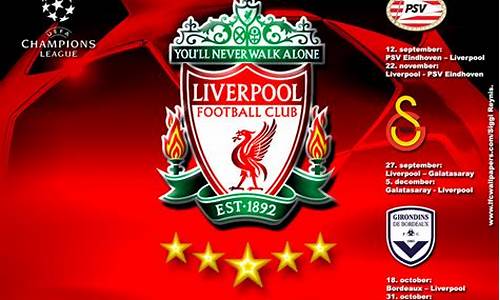您现在的位置是: 首页 > 体育新闻 体育新闻
体育新闻英语怎么说_体育新闻用英语怎么写
tamoadmin 2024-09-06 人已围观
简介1.急求一篇英语新闻体育的 最好是简单一点的 一分钟左右 然后帮我翻译下呗NBA second round of the playoffs, the seventh semi-final games western Beijing at 3:30 on May 18 was about to begin Saturday. Housten Rockets and L.A‘s seventh
1.急求一篇英语新闻体育的 最好是简单一点的 一分钟左右 然后帮我翻译下呗

NBA second round of the playoffs, the seventh semi-final games western Beijing at 3:30 on May 18 was about to begin Saturday.
Housten Rockets and L.A's seventh game of life and death battle, the outcome remains to be seen. However, according to professionals to assess, LA sits on home advantage, the possibility of winning the game in more than 80%.
Fans vote also believe that the Lakers made the highest possibility of promotion. Of course, this depends on Bryant's play and the Zen master of strategy and tactics.
Although most people are not optimistic about the Rockets, but they are in the Yao Ming, Tracy McGrady, Dikembe Mutombo missed the case has been such a success for all to see.If they can continue to maintain this momentum and played tenacious and momentum, advance to the Western military victory in the finals of the matter is not good to be true.
急求一篇英语新闻体育的 最好是简单一点的 一分钟左右 然后帮我翻译下呗
YaoMing was born September 12, 1980 in ShangHai. At 226 centimeters he is one of the tallest men in the NBA. He has played basketball all of his life but in 19 he joined the ShangHai Sharks. In 1998 YaoMing joined the Chinese National team. In the year 2000 Yao joined the All-Star team of Asia. Last year YaoMing was selected first in the NBA Draft by Houston. He was one of few first year players to make the NBA All-Star team. He has gotten off to a good start with the Houston Rockets this year by scoring 19 points in his first game. YaoMing now plays in the Houston Toyota Center. Although he played well last year, YaoMing will be more aggressive because he is ed by former NBA All-Star Patrick Ewing, who was known for his aggressive style of play. YaoMing loves meat and the color blue. He has much respect for ZhouEnlai. 有关姚明的,你可以自己删掉几个句子
The Count of Monte Cristo by Alexandre Dumas père. Highly recommended.
Apart from 'The Three Musketeers', this is probably Alexandre Dumas' most famous work and one of the greatest novels in Western literature: a novel every literate and educated person should read at least once in their lives.
In this story, Edmond Dantes is an innocent man who was caught in the intrigues of Napoleon's escape from Elba and his 100 days of power until Waterloo. A sailor entrusted with a sealed letter of highest importance by his dying captain, Dantes delivers it into the hands of the evil prosecutor Villefort who, for reasons unkown to him, immediately sends him without trial or eal to spend the rest of his days at the Chateau D'Iffe: a dark and isolated island prison presumed to be inescapable. With the help of Abbot Faria, a dying prisoner who knows the secret of a great hidden treasure on the small islet of Monte Cristo, Dantes escapes and prepares to unleash his revenge on those who did him wrong. For years he spends his time meticulously preparing his vengeful scheme against the treacherous friends and characters who left him to rot in prison for years and years. He refines his arts of disguise, alchemy, and manipulation to content himself with the ruin of his enemies.
Unlike the adventure themes in his works such as 'The Three Musketeers', this story is a deep character study on being the victim of utmost injustice and how cruel revenge is sweet after all: how a wronged man is entitled to become the agent of divine retribution when God and mortal laws he abandoned his cause. The various themes, complex plot, profound character development, and rich prose makes this long work undouedly one of the greatest works of literature ever written: Dumas was without question a literary genius.
This is a great story for people of all ages and should not be ignored by anyone who has a profound love of literature. I think this is Dumas greatest work far surpassing 'Queen Margo' 'The Three Musketeers' or 'The Corsican Brothers.'
As translator Robin Buss points out in his introduction, many of those who hen't read The Count of Monte Cristo assume it is a children's adventure story, complete with daring prison escape culminating in a simple tale of revenge. There is very little for children in this very adult tale, however. Instead, the rich plot combines intrigue, betrayal, theft, drugs, adultery, presumed infanticide, torture, , poisoning, murder, lesbianism, and unconventional revenge.
Although the plot is roughly linear beginning with Edmond Dantès' return to Marseille, prenuptial celebration, and false imprisonment and ending with his somewhat qualified triumphant departure from Marseille and France, Dumas uses the technique of interspersing lengthy anecdotes throughout. The story of Cardinal Spada's treasure, the origins of the Roman bandit Luigi Vampa (the least germane to the novel), Bertuccio's tale of his vendetta, and the account of the betrayal and death of Ali Pasha are few of the more significant stories-within-the-novel. While Dumas devotes an entire chapter to bandit Luigi Vampa's background, he cleverly makes only a few references to what will remain the plot's chief mystery-how the youthful, intelligent, and naive sailor Edmond Dantès transforms himself into the worldly, jaded, mysterious Renaissance man and Eastern philosopher, the count of Monte Cristo, presumably sustained by his own advice of "wait" and "hope."
This novel is not a simple tale of simple revenge. The count does not kill his enemies; he brilliantly uses their vices and weaknesses against them. Caderousse's basic greed is turned against him, while Danglars loses the only thing that has any meaning for him. Fernand is deprived of the one thing that he had that he had never earned-his honour. In the process, he loses the source of his initial transgression, making his fate that much more poignant. The plot against Villefort is so complicated that even Monte Cristo loses control of it, resulting in dou foreign to his nature and remorse that he will not outlive.
This long but generally fast-paced is set primarily in Marseille, Rome, and Paris. It begins with Dantès' arrival in Marseille aboard the commercial vessel Pharaon and ends with his departure from Marseille aboard his private yacht, accompanied by the young, beautiful Greek princess Haydée. What gives The Count of Monte Cristo its life, however, are the times in which it is set-the Revolution, the Napoleonic era, the First and Second Restoration, and the Revolution of 1830. Life-and-death politics motivates many of the characters and keeps the plot moving. Dumas also uses real people in minor roles, such as Countess G- (Byron's mistress) and the Roman hotelier Signor Pastrini, which adds to the novel's sense of historical veracity.
The most troubling aspect of The Count of Monte Cristo is Edmond Dantès himself. His claim to represent a higher justice seems to justify actions and inactions that are as morally reprehensible as those that sent him to prison, for example, his account of how he acquired Ali and his loyalty. Had he not discovered young Morrel's love for Valentine Villefort, she too might he become an innocent victim. As it is, there are at least two other innocents who die, although one clearly would not he been an innocent for long based on his behiour in the novel. One wonders of Dantès' two father figures, his own flower-loving father and fellow prisoner Abbé Faria, would he roved of the count.
The translation ears to be good, with a few slips into contemporary English idioms that sound out of place. In his introduction, Buss states that the later Danglars and Fernand he become unrecognizable and that Fernand in particular has been transformed "from the bre and honest Spaniard with a sharp sense of honour . . . to the Parisian aristocrat whose life seems to he been dedicated to a series of betrayals." There is never anything honest or honourable about Fernand; his very betrayal of Edmond is merely the first we know of in his lifelong pattern.
What seems extreme and somewhat unrealistic about Fernand is his transformation from an uneducated Catalan fisherman into a "Parisian aristocrat," hobnog with statesmen, the wealthy, and the noteworthy of society. This, however, is the result of the milieu that the novel inhabits. During these post-Revolution, post-Napoleonic years, Fernand could rise socially through his military and political accomplishments just as Danglars does through his financial acumen. Danglars is careful to note that the difference between them is that Fernand insists upon his title, while Danglars is openly indifferent to and dismissive of his; his viewpoint is the more aristocratic.
Countess G- is quick to point out that there is no old family name of Monte Cristo and that the count, like many other contemporaries, has purchased his title. It serves mainly to obscure his identity, nationality, and background and to add to the aura of mystery his persona and Eastern knowledge create. What is most telling is that his entrée into Parisian society is based primarily on his great wealth, not his name. Dumas reinforces this point with Andrea Calcanti, another mystery man of unknown name and reputed fortune.
I he read The Man in the Iron Mask and The Three Musketeers series, both of which surprised me with their dark aspects (the character and fate of Lady de Winter, for example) and which little resembled the adventure stories distilled from them for children and for film. When I overheard a college student who was reading The Count of Monte Cristo on the bus tell a friend that she couldn't put it down, I was inspired to read it. I couldn't put it down, either, with its nearly seamless plot, dark protagonist, human villains, turbulent historical setting, and larger-than-life sense of mystery. At 1,078 pages, it's imposing, but don't cheat yourself by settling for an abridged version. You'll want to pick up every nuance.
O(∩_∩)O哈哈~









